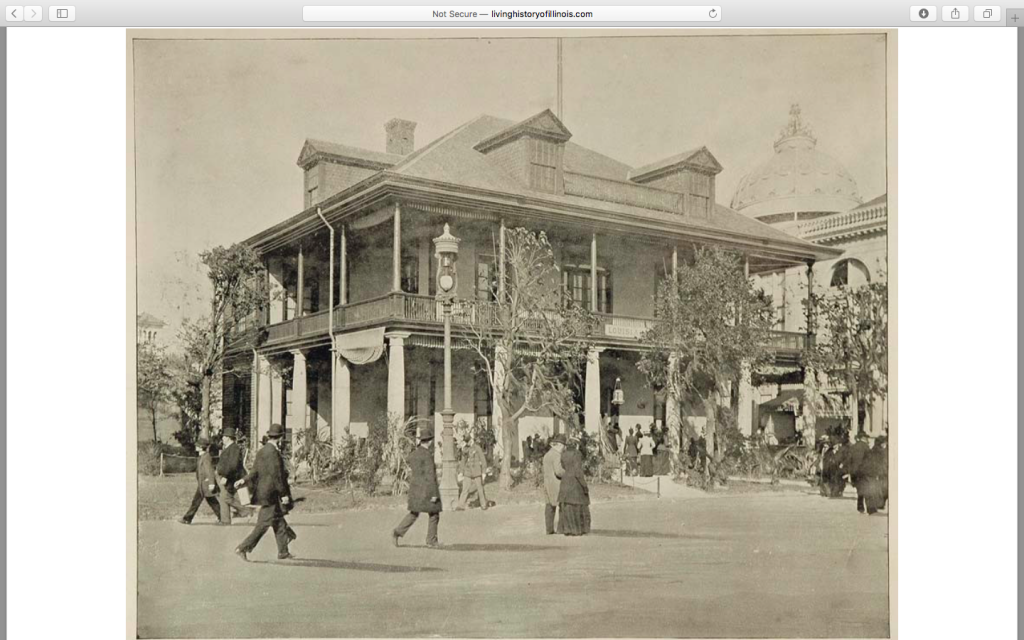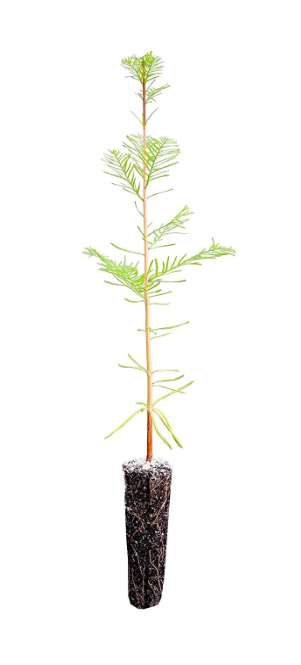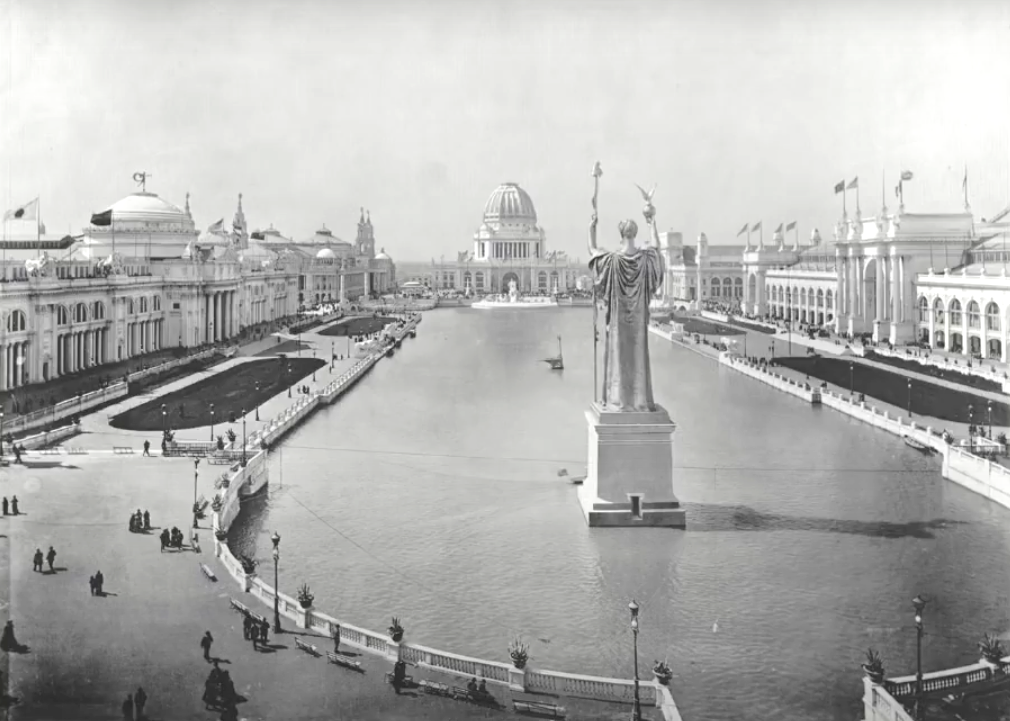
Bald Cypress in Willow Street
Living Souvenirs from the White City
Three Bald Cypress trees (Taxodium distichum) stand tall on a 18th century farm in Willow Street, hundreds of miles north of their natural range. Are they there merely on the whim of past property owners who wanted to grow an uncommon tree, or is there more to the story?
This trio of trees does indeed have an amazing backstory that is rooted in one of the all-time grand events in our nation’s history.
The Willow Street Trees
In 2018, realtor David Stull wrote the present author about “a few pine-type trees which have little nuts on their tips in the fall.” The trees, he said, are “skinny and very straight” and grow near his 1760’s farmhouse. [Note 1] “The rumor mill says these trees were brought home from the 1891 (sic) Chicago World’s Fair where seedlings were given out by some southern coastal state.” [9]
Stull’s trees turned out to be Bald Cypress whose story was confirmed by subsequent internet research. Interestingly the “rumor mill” was largely accurate: Thousands of cypress seedlings were indeed given away as souvenirs to everyone who visited the Louisiana State Building at the 1893 Chicago World’s Fair [4,5].
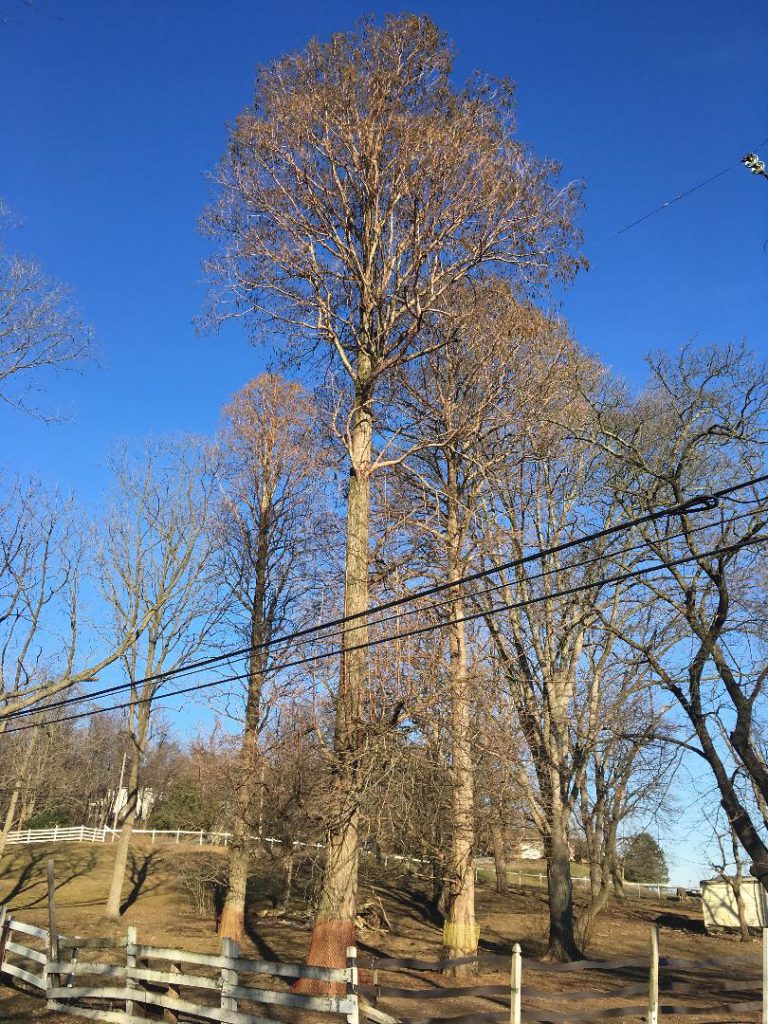
The owners of the Willow Street property at that time were John and Christiana Hershock [10], and presumably they visited the Fair during the summer of 1893. Possibly the Hershocks were joined on their journey by friends or relatives, which would explain why there are three cypress trees on the Stull farm rather than just one; their traveling companions may have donated their own souvenir trees to the Hershocks for planting. [Note 2]
The Fair
The Willow Street trees are special because of their provenance. The 1893 Chicago World’s Fair, also known as the World’s Columbian Exposition, celebrated the 400th anniversary of Christopher Columbus’s 1492 arrival in the New World. The Fair was not only the largest ever in terms of acreage and number of exhibits, but it was also a watershed social and cultural event in our nation’s history [1,3,13]. The Fair had profound impacts on architecture, the arts, anthropology, electricity and sanitation. More broadly the Fair was critically important in the recognition of women’s accomplishments, the rebuilding of Chicago’s self-image after the devastating fire of 1871, and the ginning up of American industrial optimism.
Some 27-million people — 40% of the nation’s population at the time — attended the six-month Fair. Attendees like Helen Keller, Thomas Edison and Alexander Graham Bell enjoyed such novelties as the Ferris wheel, Pabst Blue Ribbon Beer and Juicy-Fruit Gum. The Fair’s main buildings were designed in neo-classical style, covered in white stucco, and built on a grand, overwhelming scale. Thus did the Fair earn its nickname, The White City [3,7,13].
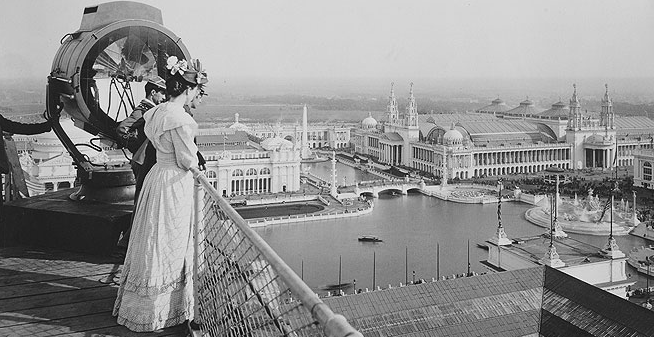
In addition to exhibits by 46 countries, each state created its own pavilion. Buildings meant to show off the major resources of each state were in many cases designed in a style that was characteristic of the state. Louisiana’s pavilion in particular was “one of the most artistic constructions of all the state edifices as it was built in genuine southern architectural style. A veranda of Louisiana woods was its most attractive feature” [6].
The Louisiana State Building had eight separate rooms [6]. These offered: (1) exhibits on the old French Acadian colony that had migrated from Canada to the Bayou country; (2) relics of the French and Spanish occupation of Louisiana; (3) exhibits celebrating Louisiana schools for “negro children”; (4) exhibits of the state’s extensive rice and sugar industries; (5) a room with the richly carved antique furniture of a former Governor as well as wooden panels beautifully designed and carved by Louisiana women; (6) a Creole kitchen that served the southern delicacies for which Louisiana was noted; (7) a performance space for members of a Creole concert company; and (8) of most concern here, a room where souvenir seedlings of Louisiana’s state tree were distributed. [Note 3] This, then, is where our Willow Street cypress trees came from.
Carvell and Higinbotham
When forestry professor Kenneth Carvell moved from New England to Morgantown WV in 1953, he immediately noticed that the city had five old Bald Cypress in its downtown area. He also observed old Taxodium in other West Virginia towns like Fairmont and Beckley. As Carvell tells it:
Curious as to how the trees got there, at least 200 miles north of their natural range, I used an increment borer to determine their age because they all appeared of equal size. My counts showed that they dated from the early 1890s. After asking elderly Morgantowners how they got their cypress and learning nothing, I turned to reading old newspapers on microfilm. This was a time-consuming type of research, but I found my answer. In 1893, there was a World’s Fair in Chicago, the Columbian Exposition. The railroads made it easy to attend because you could buy your ticket at their stations and, as a package deal, get your hotel reservations, transportation fee, and entrance fee to the fairgrounds. In one section of a 1893 newspaper was the sentence, “I watched the crowd getting off the train from the World’s Fair, each with their potted cypress clutched in their hand.” Evidently all who visited the Louisiana pavilion got a cypress to bring back to their hometown [4,5]. Thus did Carvell discover about the Morgantown trees in 1953 what the present author discovered (with David Shull’s help) about the Willow Street trees 65 years later.
Kenneth Carvell

Thus did Carvell discover about the Morgantown trees in 1953 what the present author discovered (with David Shull’s help) about the Willow Street trees 65 years later.
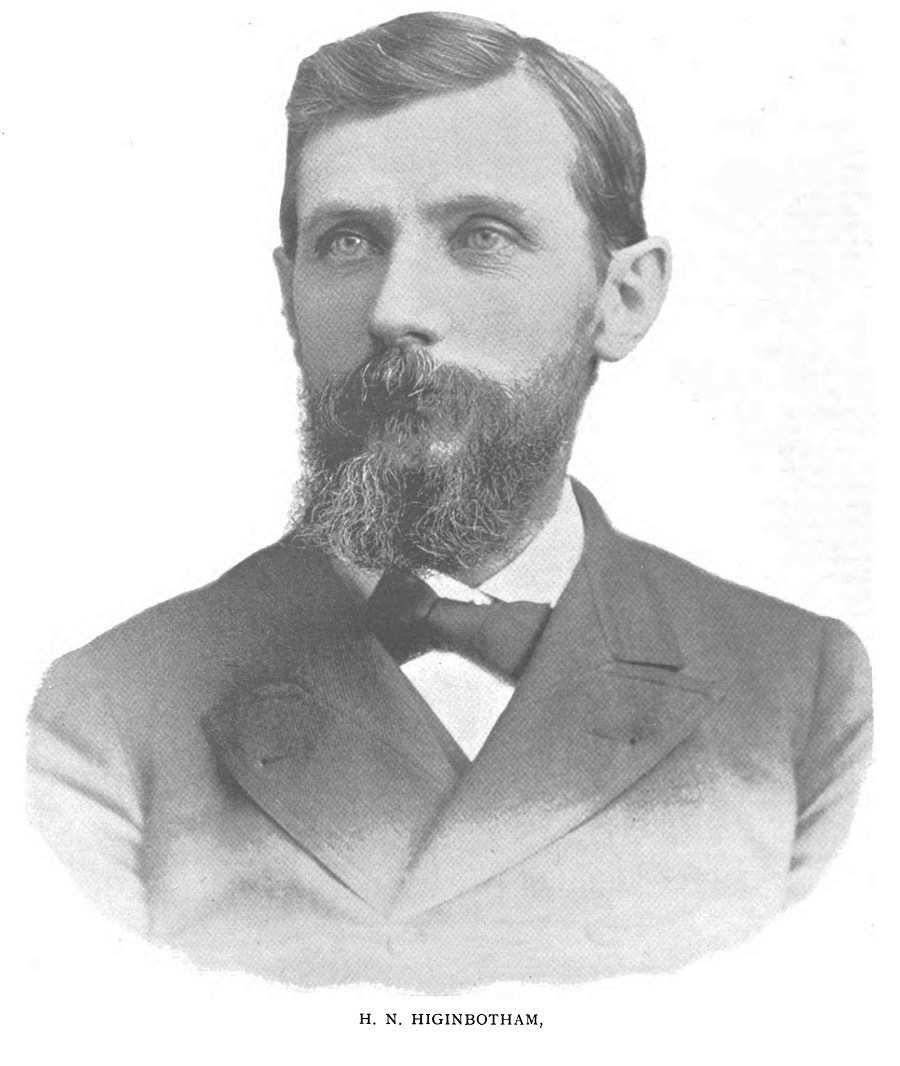
Cypress seedlings from the 1893 Fair have grown happily in other places too, especially other parts of Illinois.
Harlow Niles Higinbotham (1838-1919) was a former Civil War soldier who became the Chicago Fair’s president. Without his talented and single-minded leadership, the Fair may never have happened, much less become the financial success that it was.
After the Fair ended, Higinbotham used Bald Cypress seedlings and other trees from the Fair to establish a private arboretum on property that he owned in Joliet, Illinois [12]. This arboretum forms the heart of Joliet’s Pilcher Park today.
Lancaster’s Other ‘White City’ Cypress
In the parking lot of Lancaster’s Station House Restaurant on Fruitville Pike stands a magnificent Bald Cypress that thrives despite the impermeable pavement and polluting traffic that surround it.
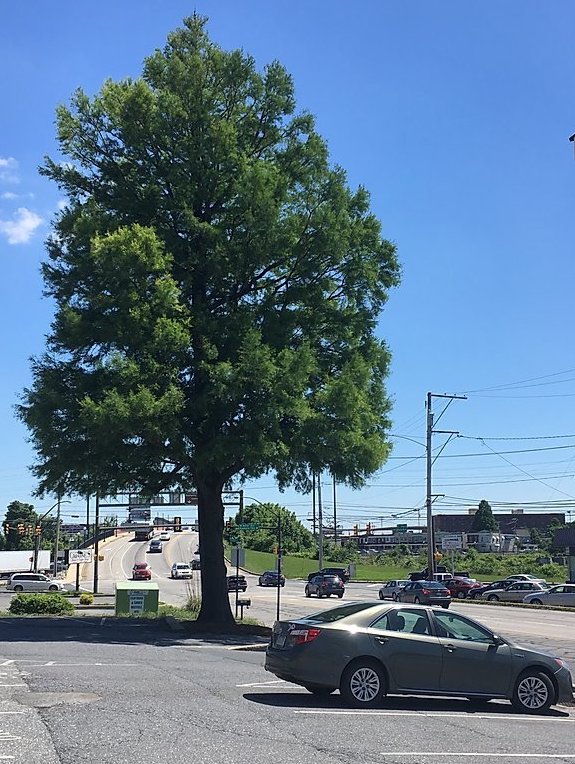
Judging from its trunk circumference of 112 inches, this tree could be 125-130 years old and thus the right age to have come from the 1893 Chicago World’s Fair. There’s no proof of such provenance but this possibility seems quite likely, all things considered.
A Final Thought
Every single person who attended the 1893 World’s Fair has, obviously, long since died. Similarly, all but one or two of the 200 buildings of the Fair are now gone, most having perished in fires that turned the dreamlike fairgrounds into nightmarish infernos mere months after the Fair closed [3,13]. Yet cypress trees that were handed out at that Fair are still flourishing all over America. [Note 4]
These trees, about 130 years old today, are still very young: Bald Cypress usually live around 600 years and have even been known to break 1,000 [Note 5]. The Stull Bald Cypresses in Willow Street thus are members of an arboreal corps that, if protected, will carry the good will and enterprising spirit of the 1893 Chicago World’s Fair centuries into the future.
